Sean Rigg was killed by police in Brixton Police Station on 21 August 2008. It took almost 4 years for the inquest into his death to be held, and they jury were then denied the possibility of giving the verdict that they would have otherwise reached. Instead they gave a lengthy narrative verdict which made clear exactly how police actions led to his death, and also condemned the NHS for their failures before his arrest and killing. The Rigg family immediately called for the Crown Prosecution Service to bring criminal charges and for a public inquiry into deaths in custody, not just that of Sean Rigg, but of the many others who die as a result of police action – including many that for various reasons don’t make the official statistics,
I first met Sean’s sisters at the annual United Friends and Families Protest march along Whitehall to Downing St in October 2008, and was impressed by their determination to fight to find what really happened to their brother and to get justice. Their tenacity has resulted in an inquest that made clear the crimes that were committed, the cover-up by the police and the the complete failure of the IPCC to investigate what took place. But they – and the other families of the several thousand people who have died in suspicious circumstances by police actions or in police custody, in prisons or in other secure facilities have yet to see justice.
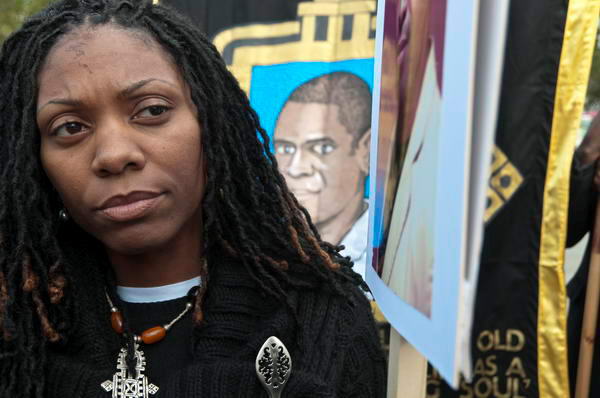
Samantha Rigg-David, 2008
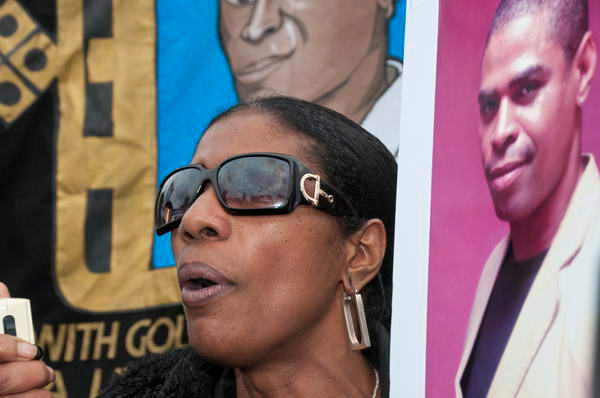
Marcia Rigg-Samuel, 2008
From the start, the ‘Justice & Change’ campaign’ the family set up has been concerned not just with their brother’s death, but with the wider issues of justice and accountability of the police and our judicial system.
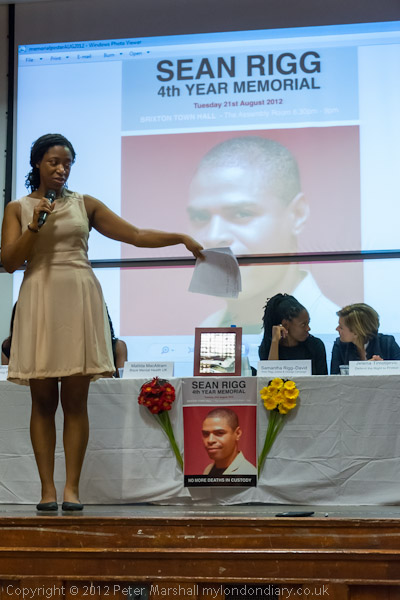
I’d arrived at the Sean Rigg 4th Year Memorial in the large assembly hall inside Lambeth Town Hall on 21 August around 20 minutes before the start of the event and was in time to take a seat with several other photographers close to the middle aisle in the second row of the hall. I’d missed an official photocall a few minutes earlier with the family and the banner, but that isn’t the kind of thing I usually bother with. I had plenty of time to make a few test shots, hoping that the same main lights would be on for the meeting, and found I could just about get usable results without flash on the D800, working at around ISO 3200 with the Nikon 28-105mm wide open. It isn’t a fast lens, only f5.6 at the long end, and I probably should have brought the Sigma 24-70 f2.8, but I’d had to rush back from an outing, grab my bag and run out of the door to get to the event, and just hadn’t had time to think. But I think the Nikon is sharper.
I did take some pictures with flash, but I don’t like to use it more than I have to, as when I’m attending meetings I find a lot of flash photography is disturbing. But for some pictures there just wasn’t enough light without.
It was an interesting meeting, but perhaps went on a little too long – over two hours, and some of the ‘questions’ from the floor turned out to be lengthy speeches. But I was really waiting for the march through Brixton that was to follow. It did eventually, but I think was held up by a number of people with video cameras stopping the leading figures and interviewing them.
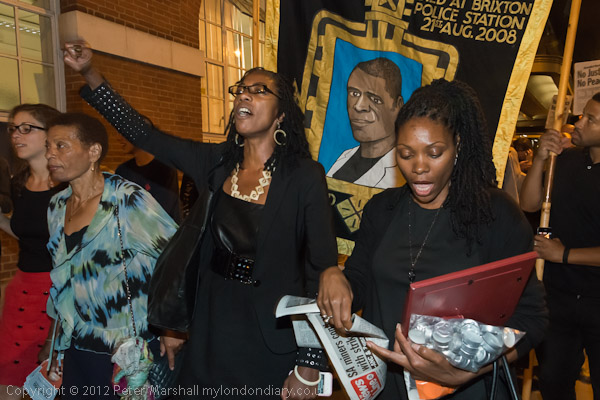
Eventually everyone was lined up outside and the march started, going just a quarter of a mile down the road to the police station. It got very crowded around the memorial tree, and I got into an argument with a man with a camcorder who came and stood right in front of me after I put my hand on his shoulder to ask him to move. He became very angry, but fortunately everyone was keen to calm things down.
Unfortunately at this point my SB700 flash started refusing to work at all on the D700, and it was very dark. I couldn’t see any reason why, and it worked fine when I switched it over to the D800. It’s the kind of annoying thing that can happen, and often the reason is simple and obvious once you sit down and take a look at things in good light, but is impossible to solve when you are frantically trying to work in darkness, as I was.
I swapped the 16-35mm to the SB-800 – it’s just a bit wider than the 18-105 – and continued working with flash. I was working at 1/60 at f6.3 with the flash, and it was so dark that to get any real contribution from ambient light and avoid an almost black background I needed to use ISO 6400.
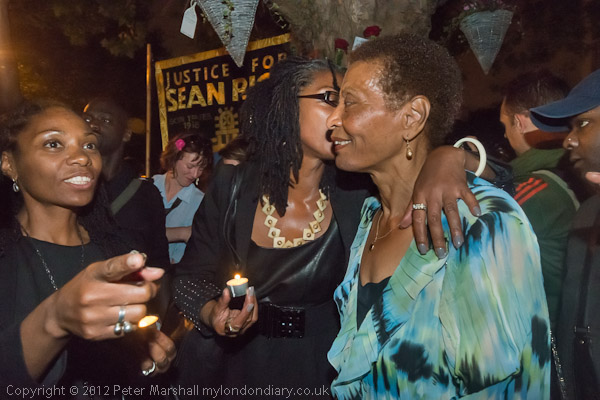
This picture was taken at 17mm (around 25mm equiv) and the flash was I think set to underexpose by around 2/3 stop. I think I’m actually too close for flash to be reliable, but the main problems I was having were actually subject movement and focus.
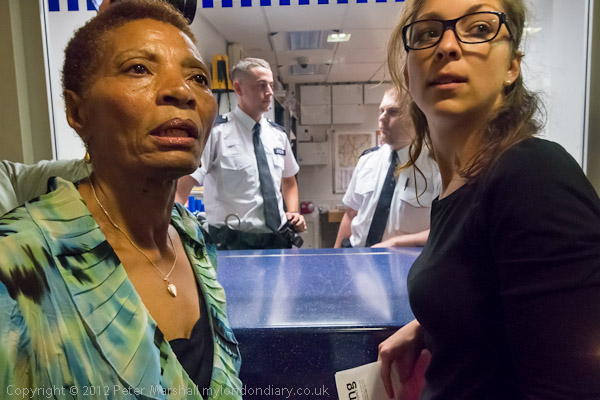
Using the 16-35 at 16mm on the D800 (24mm equiv)
I was a little reluctant to follow the group who went inside the police station to photograph there, but soon realised that I needed to as everyone else pushed in. Inside the lobby there was a decent light level and I could work without flash, but it was so squashed there wasn’t really room to change lenses. I had the the 10.5mm onto the D700, so was only getting the 5Mp or so files that DX lenses give on that camera. I had the DX body set on ISO 3200, and once processed in Lightroom 4, the quality isn’t bad. When the Superintendent came to a side door to talk to the crowd I was on the other side of the lobby, but with the camera held as high as I could reach I managed to get a picture that I thought worked OK.
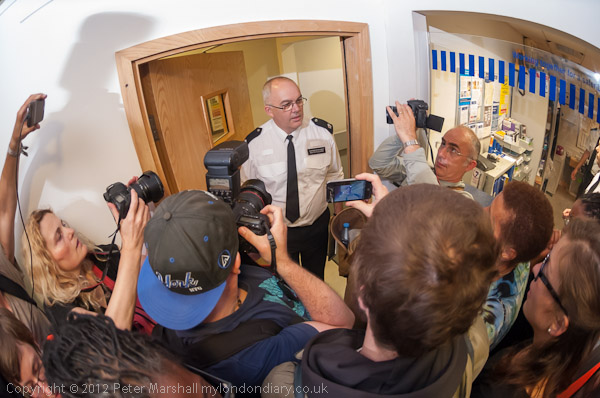
The lighting for this is helped by someone using a video light, though I’ve not quite got the colour balance optimised. But LED lighting is now feasible with still cameras too, working at fairly close distances and high ISO, and I’m thinking of buying a powerful and portable unit. I do have a very cheap unit, but it hasn’t enough power to be useful, except perhaps for reading in bed.
________________________________________________________
My London Diary : Buildings of London : River Lea/Lee Valley : London’s Industrial Heritage
All photographs on this and my other sites, unless otherwise stated are by Peter Marshall and are available for reproduction or can be bought as prints.
To order prints or reproduce images
________________________________________________________